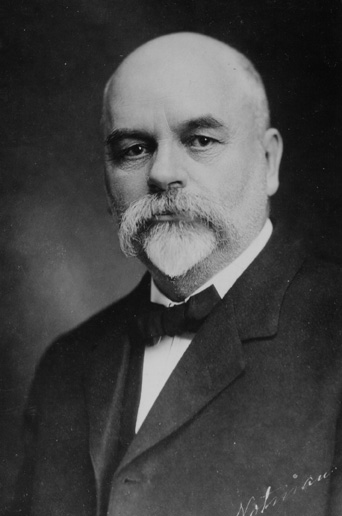Cecil Hobart Peabody is relatively unknown in the present day at M.I.T., yet he was a man of remarkable achievements and his work must have had a profound influence upon the whole subsequent development of the Mechanical Engineering Department as well as the Department of Naval Architecture which he founded.

After his graduation from the Institute in 1877, he was Professor of Mathematics and Engineering at the Imperial Agriculture College at Sapporo, Japan, for two years, and was for some time associated with the University of Illinois before returning to the Institute in1883. Within two years of his assignment to the heat engineering post, Peabody had produced a text in Thermodynamics, based upon the original developments of Kelvin and Clausius, had published Tables of Properties of Saturated Steam and Other Vapors, computed from the original data of Regnault and other investigators, and had invented the throttling calorimeter.
In his first year as Assistant Professor of Steam Engineering, Peabody established an option in Marine Engineering, open to the fourth year students, and his interest in this subject apparently expanded with time, resulting in the establishment of an option in Naval Architecture in 1891 and finally the establishment, in 1893, of the Department of Naval Architecture and Marine Engineering with Peabody as the professor in charge. Even after this time, Peabody still taught Thermodynamics and Steam Engineering in the Mechanical Engineering Department.
Before his retirement in 1920 as head of the Department of Naval Architecture, Peabody had produced, in addition to numerous papers in periodicals, the following books:
Thermodynamics of the Steam-Engine and other Heat-Engines, (six editions). Tables of the Properties of Steam and other Vapors, (eight editions). Valve-Gears for Steam-Engines, (two editions). Manual of the Steam-Engine Indicator. Naval Architecture, (three editions). Thermodynamics of the Steam Turbine. Propellers. Computation for Marine Engines. Steam Boilers (with E.F. Miller, three editions).
|
|
|
|